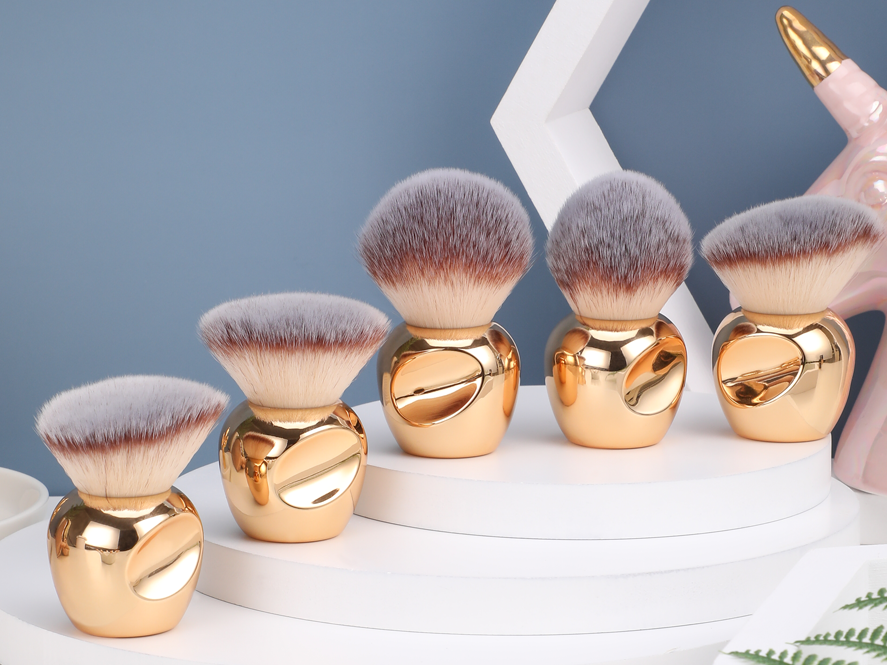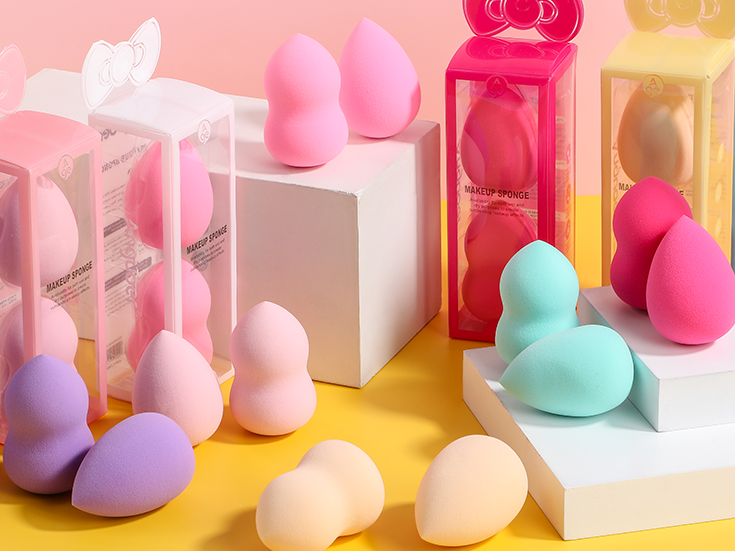Introduction
In this comprehensive guide, we will delve into the enigmatic world of Kabuki brushes, exploring their origin, structure, and the finesse required to master their usage. If you’ve ever been intrigued by these unique cosmetic tools, read on to discover the secrets of the Kabuki brush and how to wield its artful strokes for a flawless makeup application.

source: freepik.com
What is Kabuki Brush?
A Kabuki brush is a unique and versatile cosmetic tool renowned for its distinctive design and multifunctional capabilities in the realm of makeup application. The term “Kabuki” traces its origins to traditional Japanese theater, where performers utilized vibrant and exaggerated makeup. The brush, inspired by this cultural context, has evolved into a staple in the beauty industry.
The anatomy of a Kabuki brush typically includes densely packed bristles arranged in a domed or flat-topped shape. This arrangement allows for efficient and controlled application of various makeup products. The handle is short and stout, providing a comfortable grip for users, turning the application process into a precise and artful experience.
What is a Kabuki Brush Used for?

Kabuki Brushes By Types
What is a Kabuki brush used for in makeup? Indeed, each type of Kabuki brush is designed to cater to specific makeup applications, offering users a versatile and comprehensive set of tools for creating a flawless and artistic look.
| Kabuki Brush Type | Characteristics | Application |
| Foundation Kabuki | Dense, flat or domed shape for seamless blending | Application of liquid or powder |
| Powder Kabuki | Large, fluffy bristles for controlled and even coverage | Setting powders |
| Blush Kabuki | Rounded shape for a soft and diffused flush | Blush and cheek color application |
| Concealer Kabuki | Small, dense bristles for targeted and precise blending | Concealer and spot coverage |
| Eye Shadow Kabuki | Varying shapes (flat, angled) for different eye areas | Eye shadow application |
| Contour Kabuki | Angled design for precise placement and blending | Contouring and sculpting |
Kabuki Brushes By Shapes
Each Kabuki brush shape serves a distinct purpose, providing makeup enthusiasts with a range of options to achieve specific effects in their beauty routines.
| Kabuki Brush Shape | Description | Application |
| Flat Top Kabuki Brush | A flat, dense, and squared-off brush head | What is a flat top Kabuki brush used for? It’s ideal for applying powder & liquid foundation, providing a flawless finish |
| Angled Kabuki Brush | Bristles are cut at an angle | Great for contouring and sculpting, offering precision |
| Pointed Kabuki Brush | Tapered at the top, forming a pointed tip | Well-suited for detailed work, such as concealer or eyeshadow application |
| Domed Kabuki | Rounded and full brush head with a slight taper at the top | Versatile for various applications, including blush and powder |
How to Use Kabuki Brush?

Prepare Your Skin:
Start with a clean and moisturized face to ensure smooth application.
Apply primer if desired for a longer-lasting makeup look.
Foundation Application:
- For liquid foundation:
Dispense a small amount on the back of your hand.
Dab the Kabuki brush into the foundation.
Use circular motions to blend the foundation onto your face.
- For powder foundation:
Swirl the brush in the powder.
Buff it onto your face in circular motions for an airbrushed finish.
Contouring and Sculpting:
Use an angled Kabuki brush.
Apply contour product to the hollows of your cheeks, jawline, and sides of the nose.
Blend using back-and-forth or upward strokes for a natural look.
Blush Application:
Use a rounded Kabuki brush for a softer blush application.
Smile to locate the apples of your cheeks.
Sweep the brush in a circular motion on the apples and blend towards your temples.
Powder Setting:
Swirl the brush in the powder.
Lightly dust it over your face to set your makeup.
Concealer Application:
For concealer:
Use a pointed Kabuki brush.
Dab the brush into the concealer.
Apply it to areas that need extra coverage, like blemishes or under-eye circles.
Eye Shadow Application:
Choose a smaller, rounded Kabuki brush.
Apply eyeshadow to the lids using gentle tapping or swirling motions.
Clean Your Brush Regularly:
Clean your Kabuki brush regularly to avoid product buildup and maintain its performance.
Use a mild brush cleaner or baby shampoo, and gently rinse and reshape the bristles.
Practice Different Techniques:
Experiment with different techniques such as stippling, buffing, or swirling to achieve various makeup effects.
Adjust the pressure and speed of your strokes to control the intensity of the application.
Remember, the Kabuki brush is a versatile tool, and its application techniques can be adapted based on personal preferences and the desired makeup look. With a bit of practice, you’ll find the perfect strokes to enhance your natural beauty effortlessly.
How to Choose the Best Kabuki Brush?

source: freepik
Determine Your Purpose
Identify the primary use of the brush. As an individual consumer, we’ve mentioned to you that Kabuki brushes come in various types, each designed for specific applications such as foundation, contouring, blush, powder, etc. If you’re aiming to become a makeup pro, consider purchasing a complete kabuki makeup brush set for practice. If you’re a business seller working for a kabuki brush wholesale business, it’s recommended that your kabuki brush suppliers offer services such as wholesaling, private labeling, and OEM services.
Consider Bristle Material
Decide between synthetic and natural bristles based on your preferences and ethical considerations. Synthetic bristles are cruelty-free and work well with liquid products, while natural bristles are suitable for powders.
Evaluate Bristle Density
For foundation application, choose a Kabuki brush with dense bristles. This ensures smoother blending and a more airbrushed finish. Less dense brushes work well for lighter applications like powder.
Select the Right Shape
As the chart above indicates, there are different shapes of kabuki brushes for selection. The best kabuki brush for you is the one ideal for your specific use.
Consider Handle Length and Shape
Select a handle length that provides the level of control you desire during application. Short handles offer precision, while longer handles provide flexibility.
Choose a handle shape that feels comfortable in your hand, enhancing ease of use.
Brand Reputation
Research and choose reputable brands known for producing high-quality Kabuki brushes. Reading reviews and seeking recommendations can help you gauge the performance and durability of the brush. BS-Mall is a reliable makeup brush manufacturer from China, offering private-label kabuki brush service for clients with branding needs.
Budget Considerations
Set a budget based on your preferences and needs. While there are both high-end and budget-friendly options, investing in a quality brush often results in better performance and longevity.
Test Before Purchasing
If possible, feel the bristles and test the brush in-store to assess its softness, density, and overall feel. This hands-on experience provides valuable insights into the brush’s performance.
Ethical Considerations
If ethical considerations are important to you, opt for brands that offer cruelty-free options. Many brands now provide synthetic bristle Kabuki brushes that are both ethical and high-performing. BS-Mall is a sustainable makeup brush & blender manufacturer you can depend on to expand your beauty market.
Personal Preference
Ultimately, your choice of Kabuki brush should align with your personal preferences. Consider factors such as size, weight, and aesthetic appeal, ensuring the brush complements your makeup routine and style.
Conclusion
In the vast landscape of cosmetics, the Kabuki brush stands as a symbol of artistry, precision, and self-expression. From its historical ties to Kabuki theater to the diverse array of contemporary options, each brush narrates a tale of craftsmanship and aesthetic evolution. Mastering the Kabuki brush is not a routine but an immersive experience inviting individuals to explore the intersection of tradition and modernity, precision and creativity. As the brush glides across the canvas of one’s visage, it doesn’t merely apply makeup; it paints a narrative of beauty, skill, and the timeless allure of artistic expression.



















